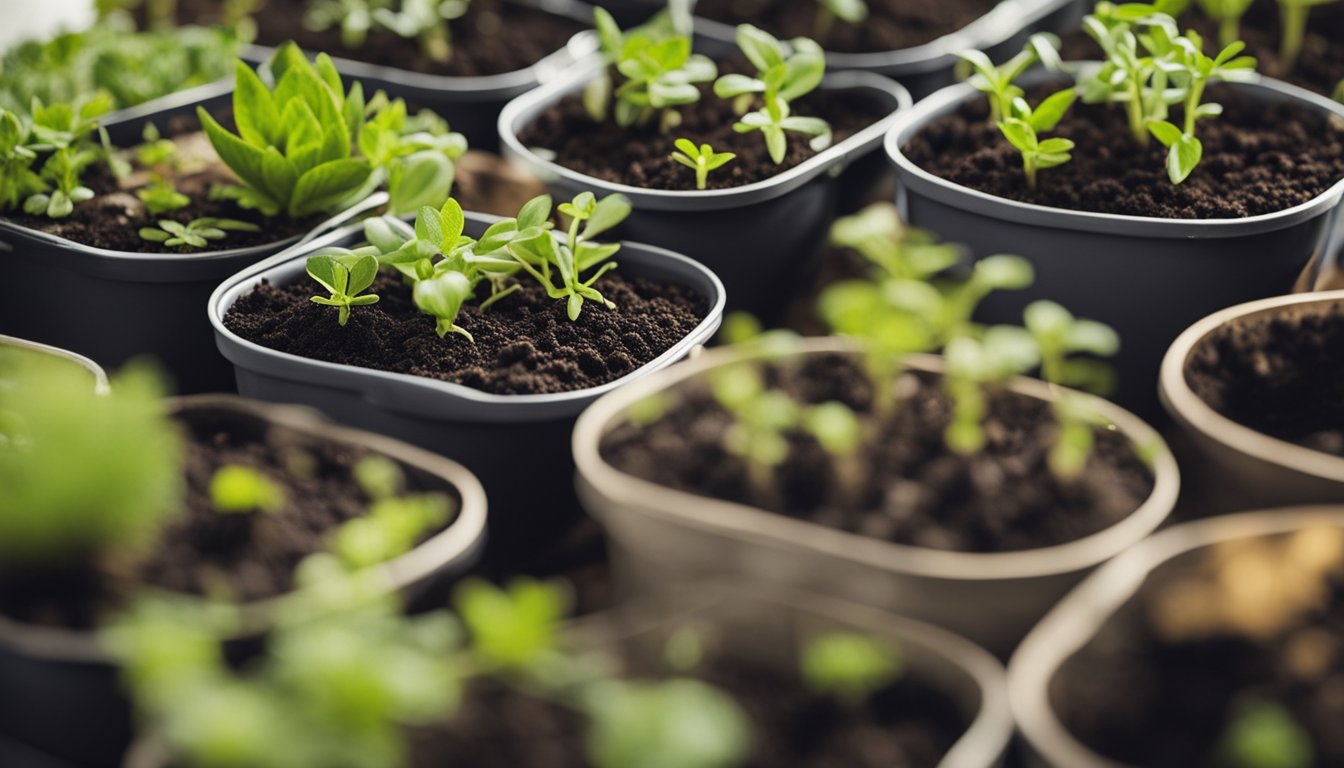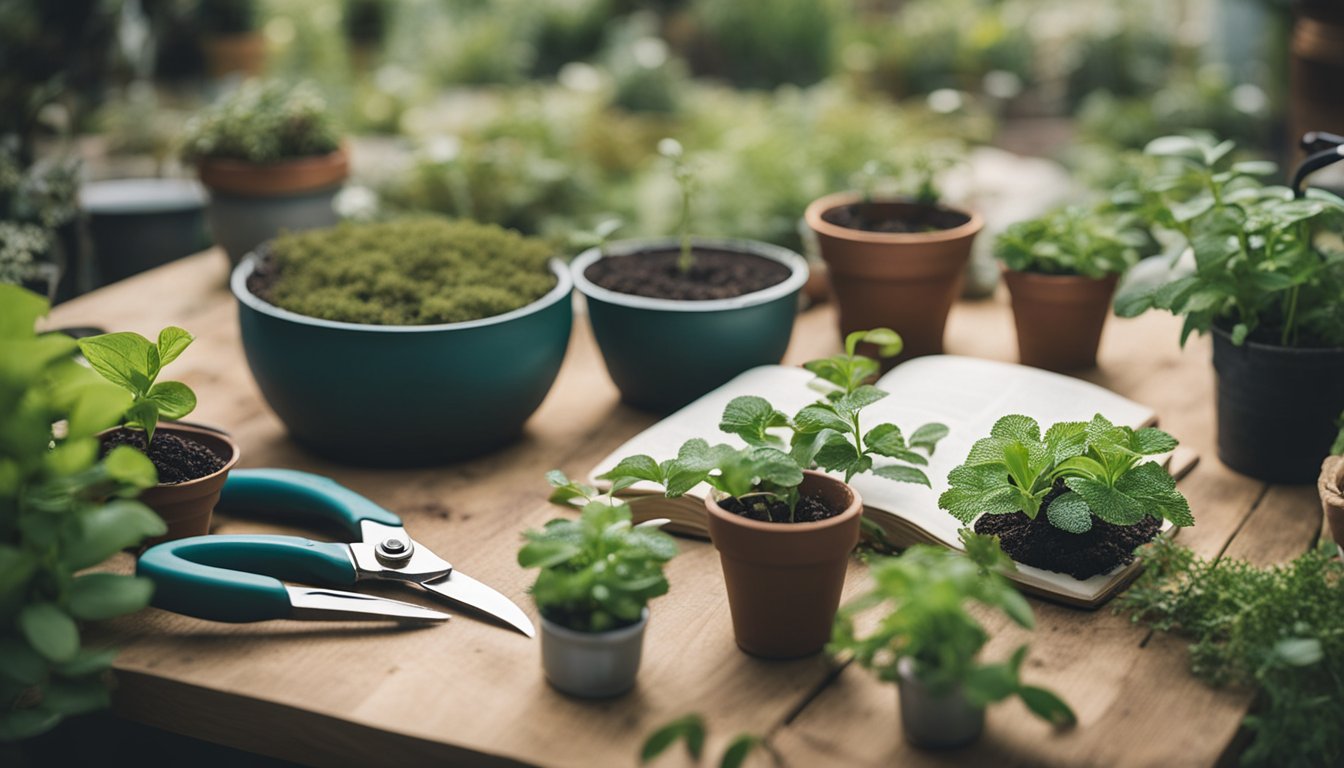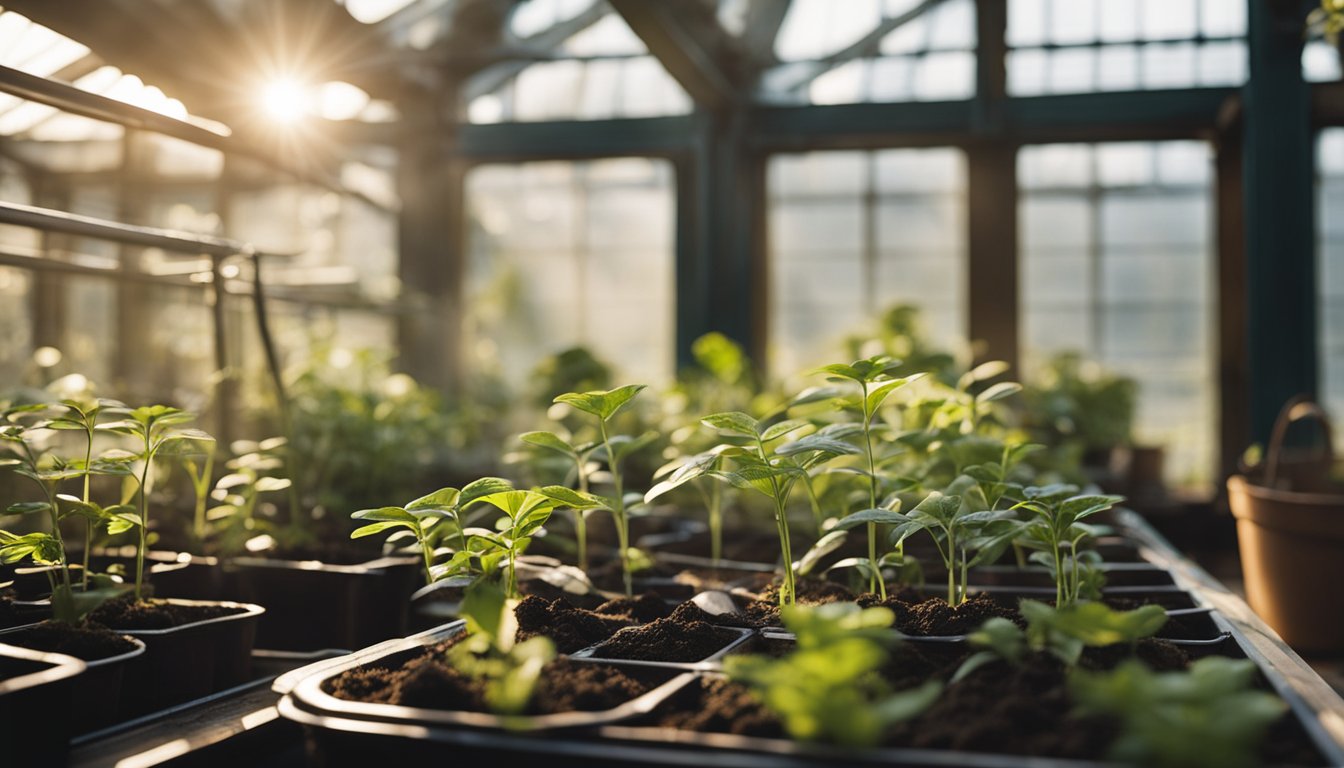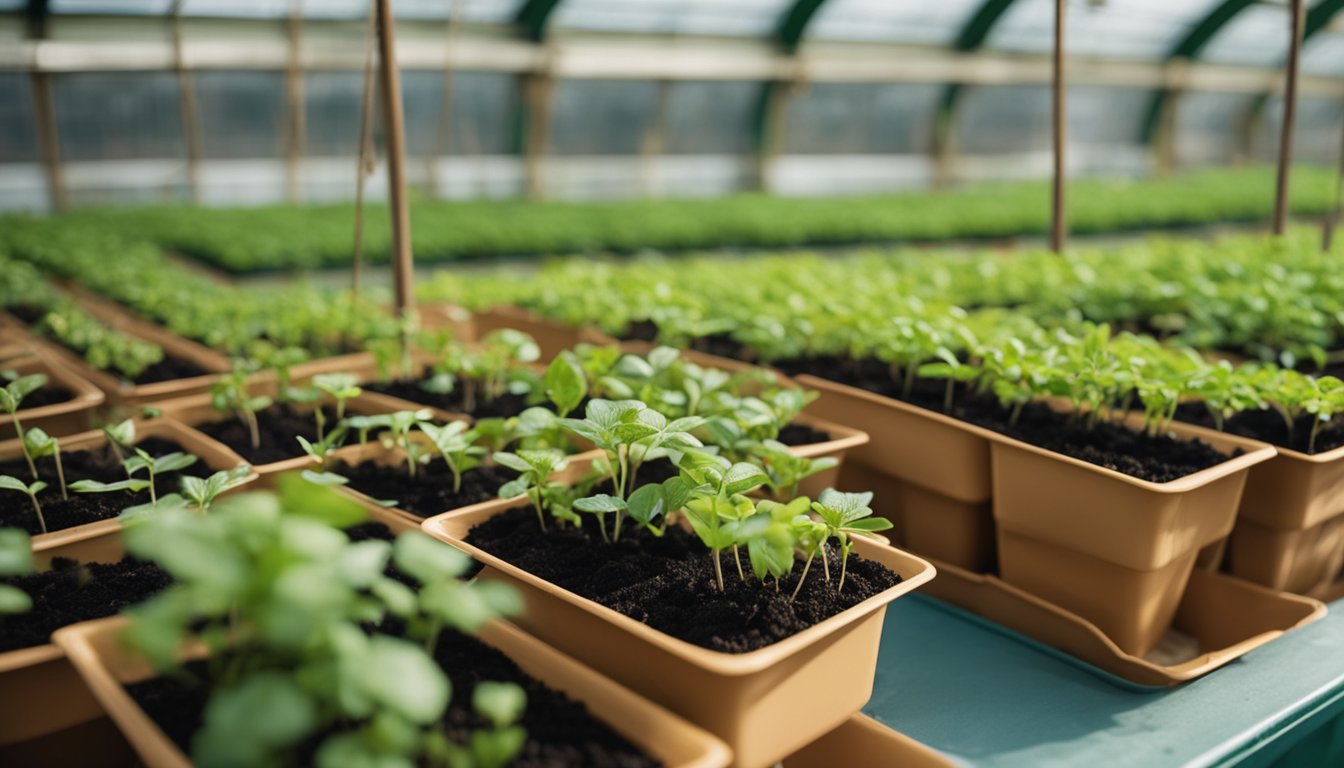Late updated: 20 Jul 2024 12:07
Written by: Emily Thornton
How To Propagate Native UK Plants: A Comprehensive Guide
Propagating native UK plants can be a rewarding endeavour that enhances your garden's biodiversity and supports local wildlife. By growing species such as honeysuckle, bluebells, and other native flora, we're providing essential food and habitats for bees, butterflies, and other insects. Understanding the various propagation techniques is key to successfully cultivating these plants in our gardens.

Each species may have unique requirements, but some common methods include seed sowing, cuttings, and divisions. These techniques mimic natural processes, ensuring the plants thrive in their new environment. With a bit of patience and care, we can enjoy the beauty and resilience of native plants which are well adapted to the local soil and climate conditions.
Practising plant propagation not only benefits our gardens but also contributes to broader ecological health. Native plants tend to require less maintenance and can offer surprising beauty with their unique blooms and growth patterns. Embracing these techniques allows us to play a vital role in preserving and enhancing our local ecosystems.
Key Takeaways
- Propagating native UK plants boosts biodiversity and supports local wildlife.
- Different propagation techniques ensure healthy growth of various species.
- Native plants are well adapted to local soil and climate, requiring less maintenance.
Understanding Plant Propagation Techniques

Plant propagation techniques allow us to grow new plants from seeds, cuttings, layering, and divisions. Each method has unique benefits and is suited to different types of plants and specific conditions.
Seed Collection and Sowing
Collecting and sowing seeds is a fundamental method of propagation. We gather seeds in late summer or autumn when they have matured. Ensure the seeds are dry before storing them in airtight containers. Use a seed tray filled with moist seed starter mix. Ideally, the mix should have good drainage to prevent waterlogging.
When sowing, lightly press seeds into the soil and cover them with a fine layer of soil. Provide a stable temperature, usually around 15-20°C, for optimal germination. Natural sunlight or a grow light can enhance seedling health.
Cuttings: Softwood and Hardwood
Taking cuttings is another effective propagation technique. Softwood cuttings are taken in late spring to early summer from the fresh growth of plants. Cut 5-10 cm sections below a leaf node using a sharp knife. Remove the lower leaves, dip the cuttings in rooting hormone, and place them in moist, well-draining potting mix.
Hardwood cuttings are best taken in autumn or winter from mature, woody stems. Choose stems that are 15-30 cm long, trim just below a bud, and remove any remaining leaves. These cuttings can be placed in a pot or directly in the ground, ensuring they are protected from extreme cold.
Layering Methods for Shrubbery
Layering is useful for propagating shrubs. This method involves bending a low branch to the ground, making a small cut or wound on the underside of the stem, and burying it in the soil. Use a U-shaped pin to hold the branch in place if necessary.
The buried section will form roots over time. It’s important to keep the soil moist and ensure good drainage. After several months to a year, the new plant can be separated from the parent shrub and transplanted.
Division for Herbaceous and Clump-Forming Plants
Division is highly effective for herbaceous and clump-forming perennials. This technique involves digging up an established plant and dividing its root ball into smaller sections. Each division should have at least one growing point or shoot.
Ideal times for division are spring or autumn when plants are not in active growth. Replant the divisions immediately in well-prepared soil with good drainage. Water them thoroughly to help establish their root systems. Division also helps rejuvenate older plants and maintain garden health.
Cultivating Healthy Native Plants

Successful cultivation of native plants in the UK involves understanding their specific growing conditions, maintaining their health, and encouraging biodiversity to enhance the ecosystem.
Suitable Growing Conditions
To promote the healthy growth of native plants like honeysuckle, dog rose, and wood anemone, it's crucial to ensure proper sunlight and shade balance. Most native species thrive in well-lit environments but can tolerate partial shade. For instance, foxgloves prefer dappled sunlight.
Soil type is another critical factor. Native plants can grow in various soils, from chalky to peaty. Testing the soil pH and texture helps select plants that are well-suited to it. Implementing good drainage is essential to prevent root rot. Using mulch retains moisture and suppresses weeds, improving overall soil health.
Watering requirements should be carefully monitored. A soaker hose ensures deep watering without wasting water. Newly planted roots need to be kept moist but not saturated for the first few weeks. Observing these conditions helps foster robust growth.
Maintaining Plant Health and Vigour
Keeping native plants in top shape involves regular pruning to remove dead or diseased parts, which encourages new growth. Plants like honeysuckle and dog rose benefit from seasonal trimming.
Disease and pest control are vital. Regular inspections for signs of disease such as fungal spots or unusual plant colour can help catch issues early. Invasive pests can be managed by introducing natural predators or removing affected areas.
Preventing competition from invasive species is also crucial. Using barriers or careful planning ensures that native plants are not overtaken. We must also ensure that our plants do not become invasive. Monitoring and adhering to local conservation laws regarding plant maintenance is important.
Promoting Wildlife and Ecosystem Benefits
Native plants play a significant role in enhancing biodiversity. For instance, planting keystone species like oak trees supports a wide range of insects, birds, and other wildlife. Smaller plants such as sunflowers and asters also attract beneficial insects.
Creating a habitat that encourages wildlife involves choosing plants with varying shapes and colours for varied attraction. Proper watering and soil management contribute to an environment where wildlife can thrive.
Native plants also aid in maintaining a balanced ecosystem by reducing the need for synthetic fertilisers and pesticides. Encouraging natural plant growth patterns helps sustain local fauna and supports an enriching natural environment, which benefits us all.
Frequently Asked Questions

Native UK plants can be propagated through various methods, each with its own set of best practices and legal considerations. This section addresses common questions to help you succeed in growing these plants from cuttings, seeds, and even water.
What is the best method to propagate native UK plants indoors?
We recommend starting with seeds in pots or trays filled with a seed-starting mix. Ensure the mix is moist but not soggy. Use a propagator to maintain consistent warmth and humidity. Place them in a bright location but out of direct sunlight until they germinate.
Can you grow UK native plants in water, and if so, how?
Some UK native plants, such as cuttings of willow or elder, can be grown in water. Place the cuttings in a jar of water, ensuring the nodes are submerged. Change the water weekly. Once roots develop, transfer them to soil for further growth.
How do you successfully propagate native UK shrubs from cuttings?
Select healthy, non-flowering stems for cuttings during late summer. Cut below a leaf node, remove the lower leaves, and dip the cutting in rooting hormone. Plant in a pot with well-draining compost. Keep the compost moist and the pot in a sheltered spot until roots form.
What are the simplest native UK plants to grow from seed?
Wildflowers like poppies, cornflowers, and ox-eye daisies are easy to grow from seed. Sow them directly into prepared soil in spring or autumn. Lightly rake the soil to cover the seeds. Water gently and keep the area weed-free as the seeds germinate and establish.
Is it legal to take cuttings from wild plants in the UK for propagation?
We must emphasise the importance of legality. It is illegal to take cuttings, seeds, or other plant material from the wild without the landowner's permission. Always seek permission and try to source plants and seeds from reputable nurseries and suppliers to avoid legal issues.
Which native UK plants are included in the Wild Seed Project plant list?
The Wild Seed Project includes plants like meadow buttercup, bird's-foot trefoil, and ox-eye daisy. These selections support biodiversity and pollinators. You can usually find their seeds through conservation organisations and specialised gardening suppliers.
